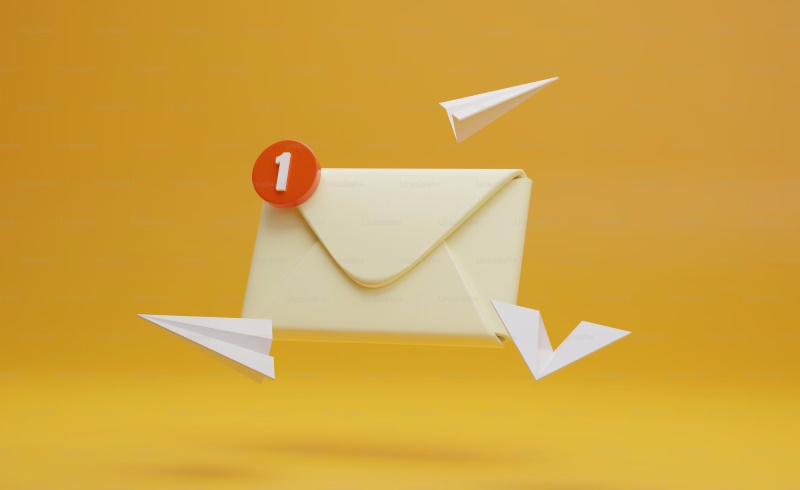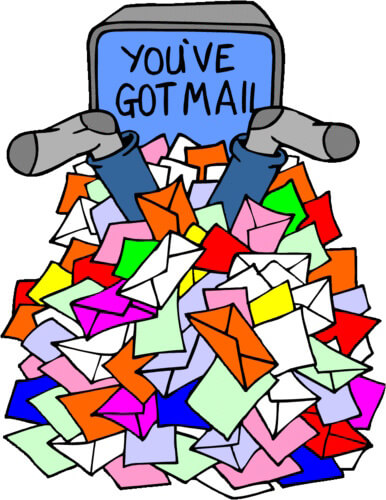8 Do’s and Don’ts For a Company Newsletter

Social media and blogging may be popular, but email is still one of the most powerful ways to keep and retain a loyal audience and customer base.
The subscription-based nature of email gets you inside your customers’ inner circle without raising their guard, which increases the potential for success – and the backlash if you do it wrong.
Minimize the backlash and make the most of your email list by following these basic do’s and don’ts of email etiquette.
Do Get Permission to Send Your Company Newsletter
Email is a form of permission marketing. If you send promotional or marketing emails to any contacts without their permission, you are violating anti-spam law, not to mention annoying and angering potential readers and customers.
When you’re building your business, there’s nothing wrong with sending an occasional email to all your contacts to let them know about your new venture and ask if they’d be interested. A good basic format to follow might be:
Hey [Friend’s Name],
As you may know, I’m [a small business owner, starting a new blog, working for XYZ Company, etc.]. I/we send out a monthly email newsletter full of [industry tips, recipes, deals, etc.], and it seems like the kind of thing you might be interested in. Would you mind if I sent you our upcoming newsletter?
If you like it, you’ll keep getting emails from us every month. If not, I’ll make sure you don’t get any promotional emails from the company.
I really think you’ll like it. Let me know if it’s okay for me to send you the next issue for you to see.
Thanks,
[Your Name]
The nice thing about this type of email is it’s easy to tailor for each individual contact you send it to, and it can really help you keep your network up to date with what you’re doing. However, you don’t want to send these kinds of messages more than, say, once every 6 months to a year. Otherwise, it can be seen as spam.
Do Make It Personal

Don’t you hate it when you get generic messages that were obviously sent to everyone on the sender’s list?
Your subscribers hate it, too. Adding the personal touch to your email company newsletters builds a relationship with each subscriber, making them like and trust you more. And the more they like and trust you, the more likely they are to eventually buy from you.
So how do you make your email newsletters more personal?
The most obvious thing is to use automation techniques so each email begins with the subscriber’s first name. But make sure it works – seeing %FIRSTNAME% at the beginning of an email is almost as bad as getting a generic mass message!
Another way to make your emails more personal is to segment your list. That way, you can target your message for specific groups (such as customers and prospects) instead of sending the same email to everyone. Targeted messages make the email feel more like a conversation, and they have a much higher conversion rate.
In addition to personalizing your emails to each individual subscriber, it also helps to make each email personal for yourself. Stories, jokes, object lessons, writing the email close to the way you speak – all of these make the email more interesting to read and you look more human, building those important customer relationships.
Do Include Your Contact Information
Including a physical address or P.O. box for your company is both legally required and good email etiquette. A real address makes you seem like a legitimate blog or business, lowering subscribers’ natural mistrust of you. Other contact information, such as your phone number and social media accounts, makes it easy for subscribers to get in touch with you, allowing you to provide better customer service and continue building relationships.
Do Include Unsubscribe Options
Anti-spam laws state that unsubscribe must be available in every email. Proper email etiquette says unsubscribe options should be easy to see in every email. If you respect your subscribers enough to let them go easily and on their own terms, they’ll respect you more for it and you’ll keep a good reputation. And as long as you don’t spam them, your unsubscribe rate will stay pretty low.
Don’t Use Too Much Automation
Automation is the golden child of internet marketing. It makes everything scalable and fast, so theoretically you make more money the more you automate.
In fact, too much automation can hurt you. Readers can tell when you’re not being genuine. If your company newsletter and other email messages are completely automated, no one will want to read them and your unsubscribe and delete rates will soar.
Make sure you balance automation with personal time and effort, such as individual replies and spur-of-the-moment messages. Your subscribers will recognize the difference and reward you for it with loyalty.
Don’t Email Too Often
If you send emails too often, readers will unsubscribe and mark your messages as spam in droves. But if you don’t send them often enough, they’ll forget signing up for your emails and do the same thing.
The trick is to find the happy medium of both how often to email and when to send emails. Company newsletters tend to be quarterly, monthly, or weekly, while lead nurturing emails may happen a lot more frequently, such as daily or a few times a week. It depends on what you’re trying to do and what your subscribers will tolerate. Test various email frequencies for each type of email you send, and the statistics will eventually tell you what your audience wants.

Don’t Use Spam Trigger Words
Using the wrong words in your email subject lines can prevent your messages from ever reaching your subscribers’ inboxes. These trigger words put up a red flag in most email clients and providers, so your completely innocent message gets filtered directly into the spam or junk folder.
Don’t Buy Email Lists
Building your own list of subscribers is a long, arduous process, but the results are worth it. These subscribers actually want your emails, so they’re more likely to read them and follow through on your calls to action. And you get to keep a list you build yourself when you start a new business or blog. Buying or renting a list compiled by someone else is just spam, and a complete waste of money since most people on that list won’t become customers.
What other email etiquette best practices do you follow? Please share your thoughts and experiences in the comments!

Comments (0)